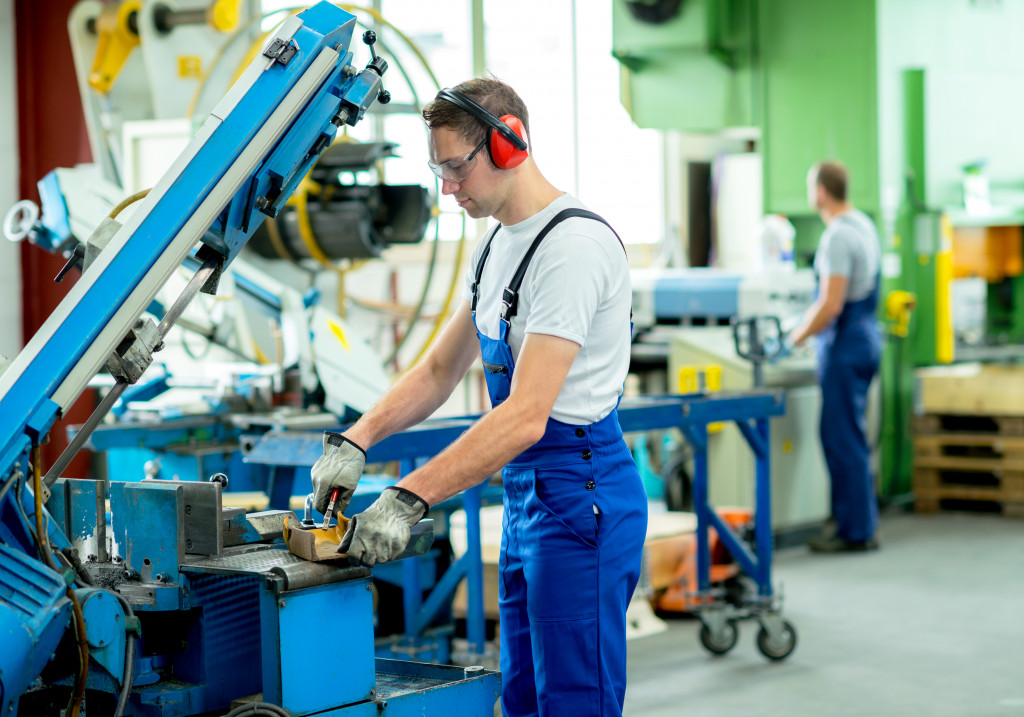- Precision in manufacturing is crucial for remaining competitive.
- Modern techniques have replaced traditional methods for achieving precision.
- Digitalization has played a significant role in improving precision standards in manufacturing.
- A machine vision system is like an extra set of eyes, constantly monitoring and detecting errors in the production line.
- Integrating a machine vision system offers unparalleled accuracy, speed, and consistency in quality checks.
Precision in manufacturing isn’t just a buzzword; it’s a necessity. If you’ve ever wondered how to ramp up the efficiency and quality of your production process, you’re in the right place. This guide is tailored for you, shedding light on the importance of precision and how to achieve it in today’s manufacturing landscape.
The Evolution of Precision in Manufacturing
You might recall a time when achieving precision in manufacturing was a labor-intensive affair. Manual checks, calibrations, and much trial and error were the norms. But as with most things, time brings change, and manufacturing has evolved considerably.
Traditional Methods vs Modern Techniques
Remember when skilled artisans and workers relied on their expertise and manual tools to ensure products met specific standards? That was the era of traditional methods.
Fast forward to today, and you see a world where modern technology-powered techniques have taken center stage. These modern methods offer greater accuracy and significantly reduce the time taken to achieve the same results.
The Role of Digitalization in Achieving Precision
Digitalization is like a gift that keeps on giving. From computer-aided designs (CAD) to real-time monitoring systems, digital tools are paving the way for unmatched precision in manufacturing.
Instead of relying solely on human judgment, which can sometimes be prone to error, digital tools offer consistent and precise results, time and time again. When you embrace digitalization, you’re not just adopting a new device; you’re opening the door to a world of possibilities where precision is the norm, not the exception.
The Role of the Machine Vision System in Manufacturing
Imagine having an extra set of eyes that never tire and can spot the tiniest of errors in your production line. That’s what integrating a machine vision system can offer you. As manufacturing continues to evolve, introducing technologies like machine vision systems is pivotal in elevating precision standards.
Understanding the Machine Vision System

So, what exactly is a machine vision system? In simple terms, it’s a camera-based inspection system used in various industries, especially manufacturing. It captures and processes images, allowing it to detect defects, guide machines, and perform multiple other functions.
Think of it as a super-smart camera that can see, understand, and react to what it observes. With this in your arsenal, achieving optimal precision becomes a much smoother journey.
Benefits of Integrating a Machine Vision System
Why should you consider integrating a machine vision system into your production line? Firstly, it offers unparalleled accuracy. By minimizing human intervention, you reduce the chances of errors cropping up.
This system can work around the clock, ensuring consistent quality checks and monitoring. Furthermore, it speeds up the inspection process. Instead of manually checking every product, the machine vision system quickly scans and identifies any discrepancies, allowing you to maintain high production speeds without compromising quality.
Critical Considerations for Implementing Precision Tools
While the appeal of achieving top-notch precision in manufacturing is undeniable, diving headfirst without a roadmap can lead to hiccups. Embracing the right tools and strategies is paramount. Here’s a closer look at what you should keep in mind.
Choosing the Right Tools for Your Needs
It’s not about having the most advanced tool on the market; it’s about having the right tool for your specific needs. Begin by evaluating your current manufacturing processes. Where do you find gaps? Which stages require the most manual oversight?
Once you have a clear picture, you can identify tools and systems tailored to those needs. And remember, while a machine vision system might be a fantastic fit for some, other precision tools could be more apt for your particular challenges.
Training and Adaptation for Teams

Even the most advanced tool is useless if your team doesn’t know how to harness its potential. Training is crucial. When introducing any new system or device, allocate time and resources to familiarize your team with its operations.
Encourage questions, hold hands-on sessions, and hire experts for specialized training. Additionally, fostering an environment that is open to adaptation ensures smoother transitions. Change can sometimes be met with resistance, but reminding your team of the long-term benefits – such as increased efficiency and reduced errors – can make all the difference.
Final Thoughts
Precision in manufacturing isn’t just a lofty ideal; it’s a tangible goal within reach, especially with the tools and technologies available today. As you’ve journeyed through this guide, you’ve uncovered the evolution of precision, understood the transformative power of the machine vision system, and grasped the importance of selecting the right tools while ensuring your team is onboard and trained.





